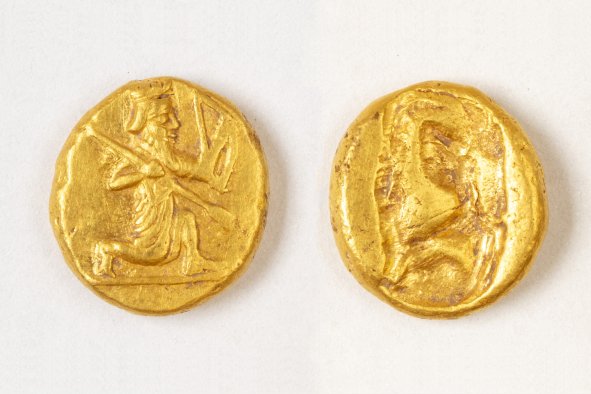Scientists have discovered a weird and wacky quirk regarding how poison frogs have sex.
Several species of male poison frogs use a "swollen fingertip" to pass pheromones into the female during sex, possibly changing her behavior, according to a new paper in the journal Molecular Ecology.
These pheromones may make the female more receptive to mating, or even change her behavior afterwards.
In the paper, the researchers describe how the males of several species of Neotropical poison frogs often appear to have a single finger swell up during mating, which the males will place near the female's nose during sex.
The researchers suspected that the males may be transferring some kind of pheromone to the female from this bulbous gland.
"In some dendrobatids, the swollen finger co-occurs with cephalic amplexus, whereby the male mounts the female from behind and loosely places his hands on either side of her head, with the dorsal surface of the hand, and therefore the swollen portion of the finger, conspicuously adjacent to her nostrils," the researchers wrote. "At present, the function of cephalic amplexus is not known, but it has been hypothesized to aid in transferring gland secretions acting as pheromones."
Pheromones are chemical substances produced and released by animals. They play a crucial role in communication, and can influence a wide range of behaviors, including mating, territory marking, alarm signaling, and social organization. Many animals release sex pheromones to attract potential mates, to mark territory, to warn others of danger, or strengthen the bond between parents and their offspring.
Pheromone use in frogs has not been studied in much detail, however, as they have been long thought to primarily communicate using vocalizations rather than chemical signaling.
The researchers describe how they dissected the swollen fingers of these frogs and analyzed the RNA within them, to determine if they were producing pheromones. Their results showed that this finger did indeed produce chemicals called sodefrin precursor-like factors (SPFs), which are "a well-known pheromone system in salamanders."
In other species, SPFs have been found to increase female mating receptivity, meaning that courtship doesn't last as long.
"Our study shows, for the first time in dendrobatid frogs, that the swollen fingers strongly express SPFs, a family of proteins with pheromone function in amphibians," they wrote in the paper. "Overall, the high expression of SPFs in the swollen fingers in both species, combined with cephalic amplexus, supports the hypothesis that these traits, widespread across members of the subfamilies Colostethinae and Hyloxalinae (ca. 141 species), are involved in chemical signaling during courtship."
While this paper doesn't confirm that the males are generating pheromones that they pass to the female during sex via their nostrils, it does strongly imply that the frogs may be using these pheromones to influence the females' behavior.
"In addition to pheromone production, swollen fingers, when coupled with cephalic amplexus, as in E. anthonyi, could be important for the transmission of pheromones," they wrote.
The researchers aren't certain of the exact effects of these pheromones on the females, but suggest it could impact their egg-laying behavior or their mating receptiveness.
"We hope to encourage more studies to clarify the function of the SPFs in frogs and characterize the behavioral and physiological responses of females to male SMG secretions," the researchers wrote. "Further research is needed ... to unravel which effect the SPF proteins have on the females during reproduction."
References
Almeida, D. A., Twomey, E., Vargas‐Salinas, F., Meyer, C., & Schulte, L. M. (2024). Sexy fingers: Pheromones in the glands of male dendrobatid frogs. Molecular Ecology. https://doi.org/10.1111/mec.17476
Do you have a tip on a science story that Newsweek should be covering? Do you have a question about frogs? Let us know via science@newsweek.com.
Disclaimer: The copyright of this article belongs to the original author. Reposting this article is solely for the purpose of information dissemination and does not constitute any investment advice. If there is any infringement, please contact us immediately. We will make corrections or deletions as necessary. Thank you.



